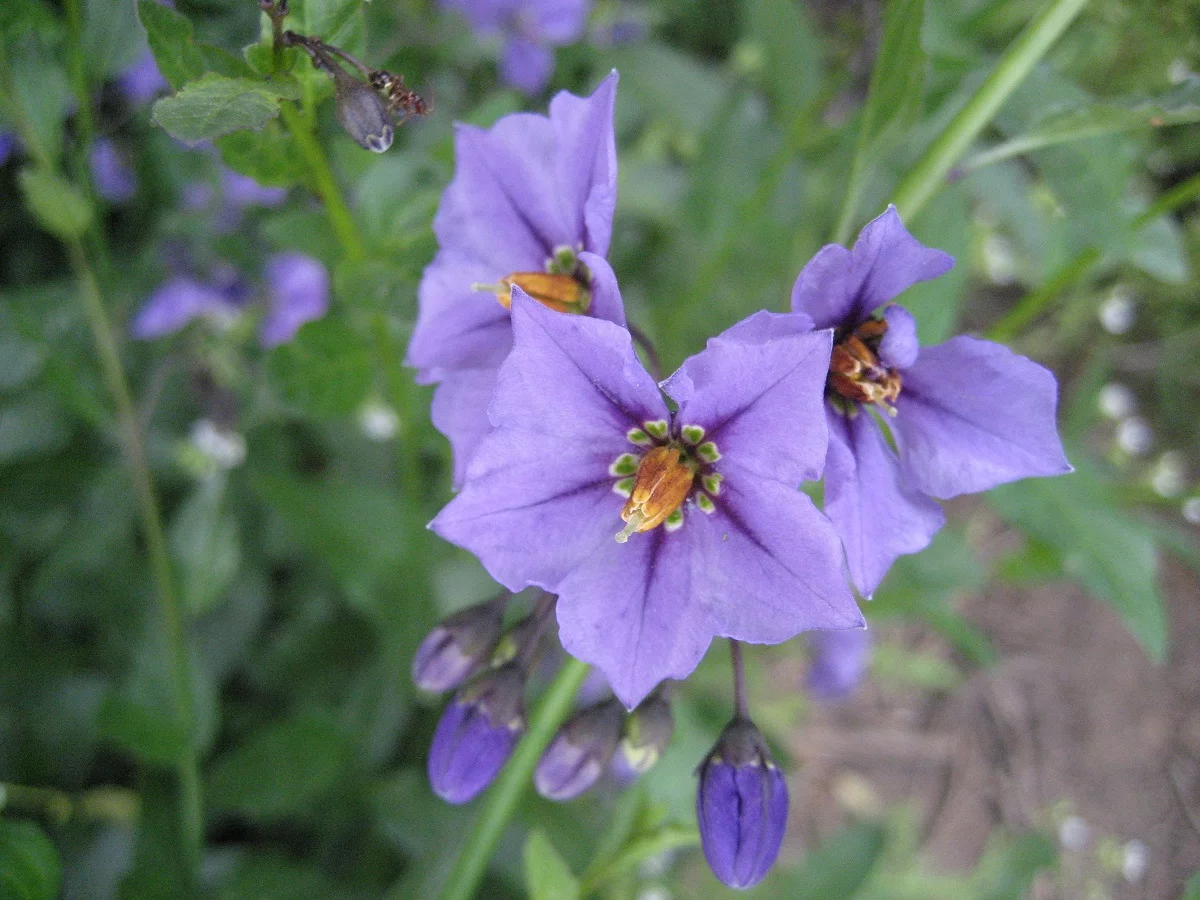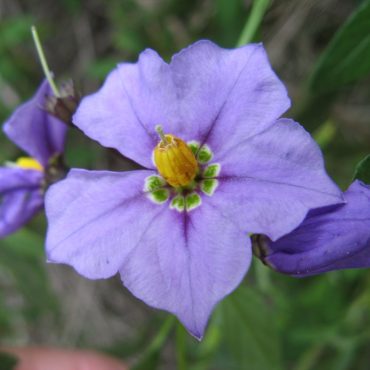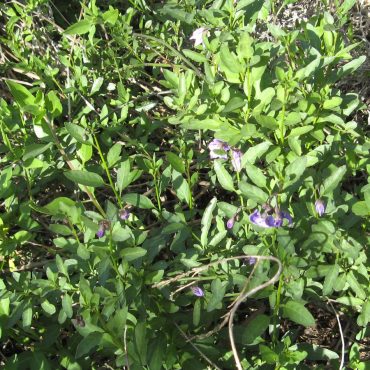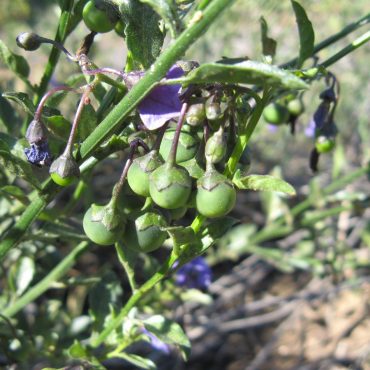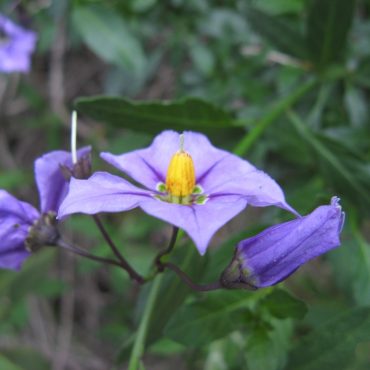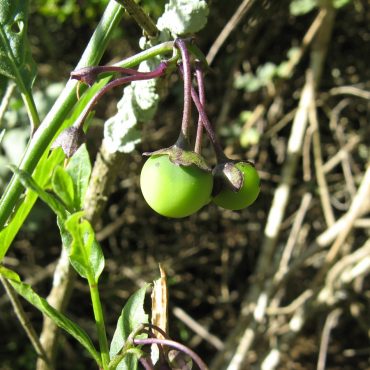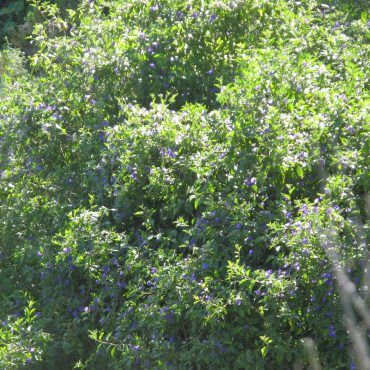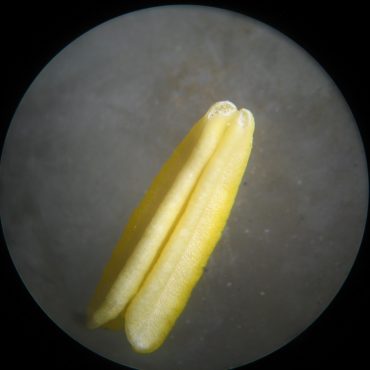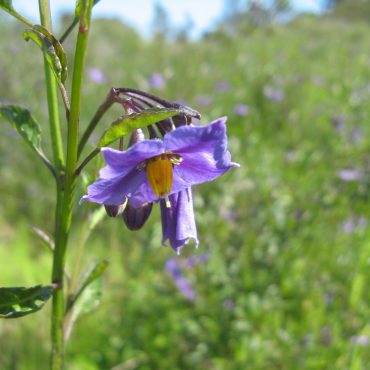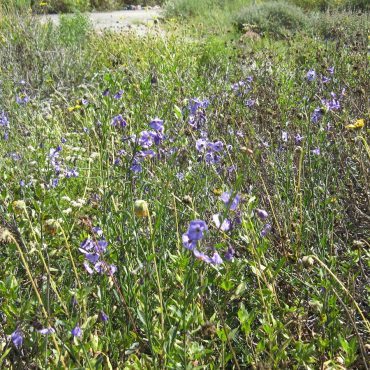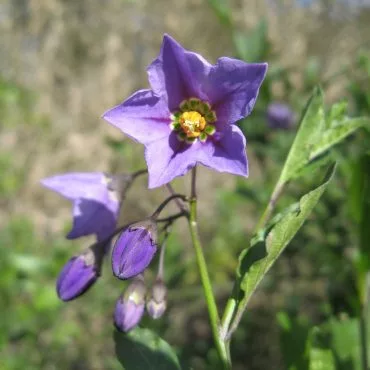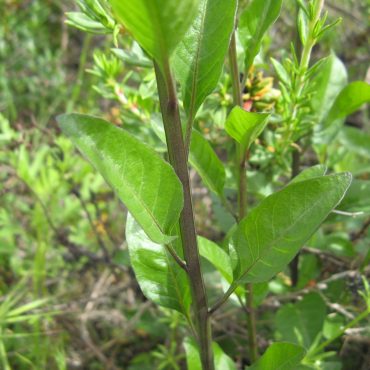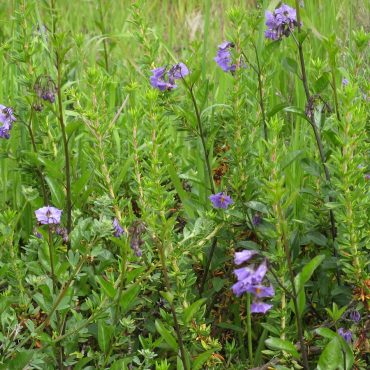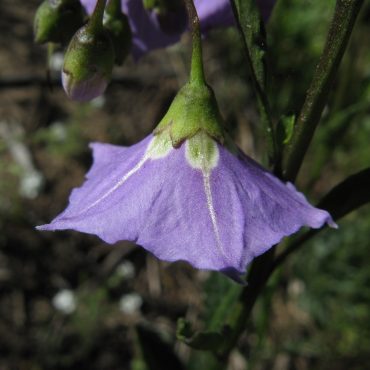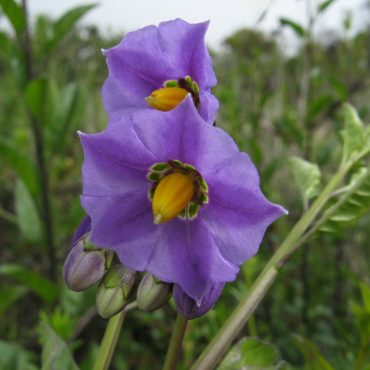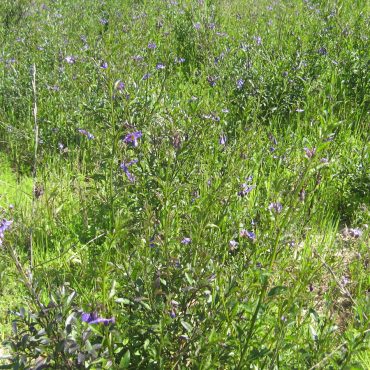Classification
2,44,143
Parish’s nightshade is a dicot angiosperm in the tobacco family (or nightshade family or potato family; Solanaceae). Members of this family have five petals that are fused into a tube, at least at the base. Sometimes the petals or lobes are reflexed. Fruits are either a berry or a capsule. Many members of this family contain alkaloid compounds which may be toxic or narcotic; these include scopolamine, atropine and nicotine.
The tobacco family includes many well-known food and ornamental species such as tomato, pepper, potato, petunia and night-blooming jasmine. The family also includes tobacco and belladonna. Eight species in this family have been reported from the Reserve48 including the toxic sacred datura (Datura wrightii), the threatened California box thorn (Lycium californicum) (CNPS list 4B), and the invasive tree tobacco (Nicotiana glauca).
The genus, Solanum, is partly distinguished by the anthers, which form an unfused cone around the pistil and which release pollen through pores at their tips.11 All members of this genus are toxic.
Three similar species of nightshade have been described. In addition to S. parishii, these include S. xantii (chaparral nightshade) and S. umbelliferum (blue witch). Several authorities have questioned their status as separate species.2,4 “…they are nearly identical and differ only in minor physical features that vary widely, overlap and are inconsistent….These three nightshades are probably best considered members of a single species.”59
Jepson eFlora Taxon Page

